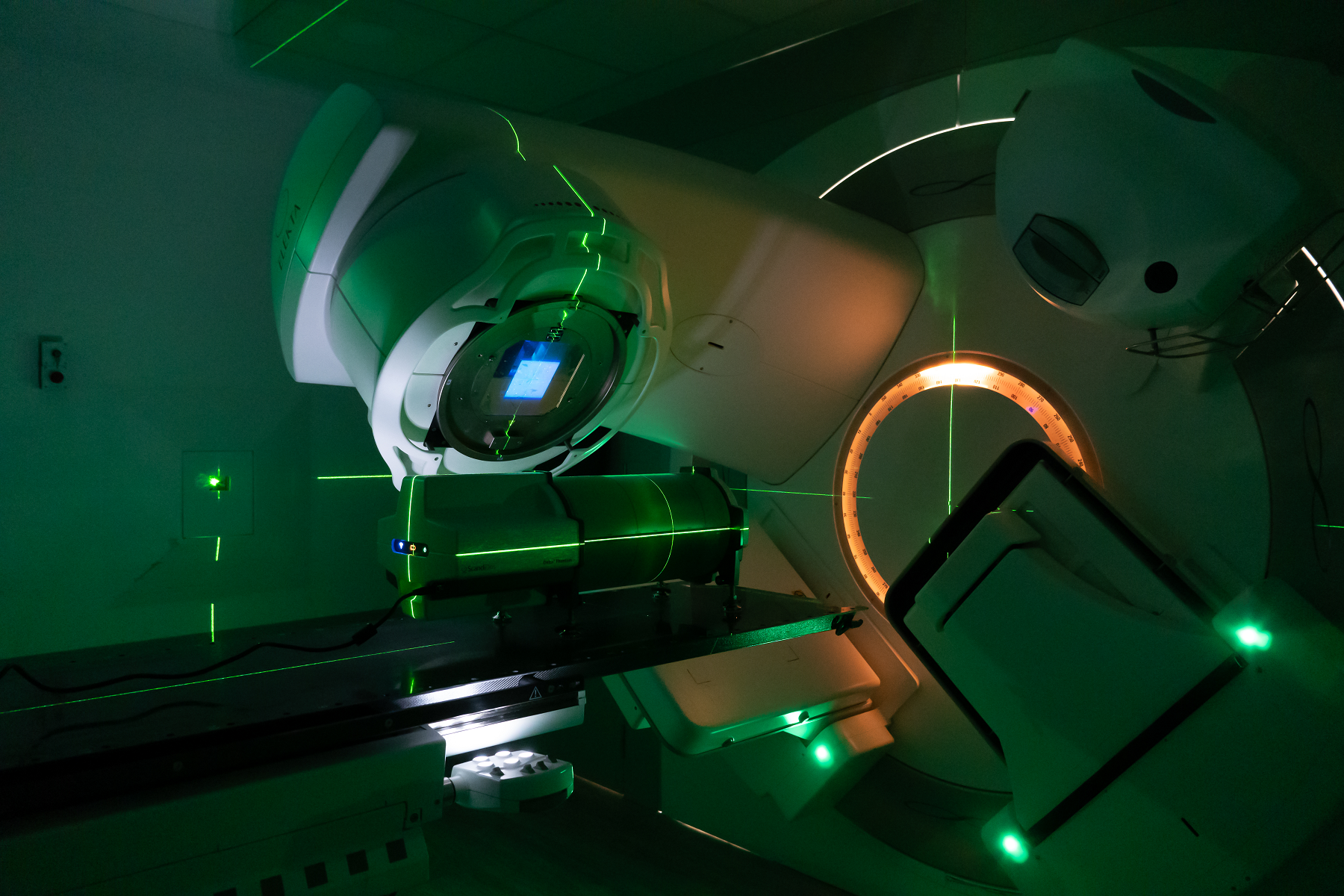
The Department of Medical Physics provides a comprehensive range of scientific services to support the external-beam radiotherapy applications of the University Hospital of Iraklion.
The equipment of the Radiation Oncology department includes two linear accelerators, a conventional therapy simulator and a treatment planning system. The two linear accelerators were installed the last 4 years and produce both photon and electron beams.
The aim of radiation therapy is to expose the target volume with the prescribed dose and simultaneously to reduce the radiation dose to the surrounding normal tissues. This can be achieved with the use of advanced computerized treatment planning systems. The staff of the Medical Physics department should collect all necessary dosimetric data from the linear accelerators, transfer these data to planning systems and, then, perform the beam modeling process. Each patient undergoes a treatment planning computed tomography (CT) scanning prior to irradiation. The anatomic regions of interest such as external contour, targets, critical normal structures should be manually delineated on a slice-by-slice basis. These two-dimensional contours on CT images are employed to obtain a three-dimensional (3-d) reconstruction of patient anatomy. Treatment plans are then generated for patient’s irradiation in the linear accelerator with the following techniques: 3-d conformal radiotherapy, intensity modulated radiation therapy (IMRT) and volumetric modulated arc therapy (VMAT). The 3-d patient dose distribution is calculated and displayed. Dose-volume histograms are also displayed for the contoured structures and target volume. A plan optimization procedure is always performed to find the proper irradiation technique and parameters that provide improved tumor coverage and normal tissue sparing. Patient QA with an independent dosimetric system is performed by medical physicists for all IMRT and VMAT plans.
Medical physicists perform all acceptance tests and determine the dosimetric parameters of the simulator and linear accelerators installed in the Radiation Oncology depertment. The commissioning of the above machines is a responsibility of the medical physics group. Moreover, medical physicists are responsible for developing and directing quality control programs for equipment and radiotherapy procedures.



 The Department of Medical Physics provides a comprehensive range of scientific services to support the external-beam radiotherapy applications of the University Hospital of Iraklion.
The Department of Medical Physics provides a comprehensive range of scientific services to support the external-beam radiotherapy applications of the University Hospital of Iraklion.